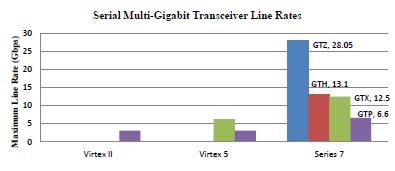1.1 Increasing the number of Recording Channels:
More is Different – The behavior of large and complex aggregates of elementary particles, it turns out, is not to be understood in terms of a simple extrapolation of the properties of a few particles. Instead at each level of complexity entirely new properties appear.
Philip Warren Anderson
The augmentation of the number of recording channels carries different challenges to the neural signal processing system. The primary challenge is the massive increase in recorded data that needs proactive strategies for data transfer, reduction, management and analysis. The implementation of real-time signal processing becomes essential to alleviate huge data storage requirements. The access to a more detailed view of neuronal networks might reveal new properties and challenges pushing for the development of new analyzing tools.
With the continuous advancement of data acquisition systems featuring high-count recording channels, there exists a clear need for a test bed to develop and investigate a more suitable new generation of Neural Signal Processing (NSP) algorithms and computational tools. The platform has to offer programmable flexibility to allow the trial of different new strategies and novel computational techniques as well as rigorous testing for evaluation.
A plausible NSP platform that can handle thousands of recording channels has to provide means of high data transfer. As a numerical example, a NSP platform handling 2560 channels sampled at 31.25 KH at a sample precision of 16-bits must be capable of managing an input data stream of 1.28Gbps. The data transfer interface has to be compatible with high-density neural data acquisition systems.
Data reduction based on the sparse nature of the neural signal with respect to time and the redundancy perceived across multiple electrode recordings becomes essential. Spike detection is the essential first step building block that allows the system to deliver only the action potential waveforms, their respective occurrence times and channel ID instead of the entire raw signal. The AP waveforms are then used by an autonomous spike sorter to first distinguish true spikes from false detections, then, to associate each spike to its generating neuron in case of multi-unit recordings. Depending on the performance and inter-electrode spacing, the AP waveforms might be necessary to identify redundancy over multiple recording channels.
The spike detection settings for each channel is independent from the settings of other channels, and hence spike detection over different sites can run in parallel. Applying parallel processing whenever possible limits the overall latency and assists in achieving real time implementation.
The NSP platform has to be fully autonomous and functional under expected Signal-to-Noise Ratios delivered by the data acquisition system. The system must be adaptive to varying noise levels over different channels and over time.
The main objective of the dissertation is to design an experimental test bed that can facilitate dealing with a large number of recorded neurons in real time. It also presents an architecture that performs spike-based data reduction.
1.2. Why Consider FPGA?
Ross Freeman (1944-1989) established the leading FPGA developer Xilinx in 1984 and invented a year later the first Field Programmable Gate Array (FPGA). FPGAs are programmable semiconductor devices that are based around a matrix of Configurable Logic Blocks (CLBs) connected through programmable interconnects. FPGAs can be configured to implement custom hardware applications and functionalities. Since their invention, FPGAs have evolved far beyond the basic capabilities present in their predecessors, and incorporate hard Application Specific Integrated Blocks of commonly used functionality such as RAM, clock management, and DSP. FPGAs are parallel in nature, so different processing operations do not have to compete for the same resources. Each independent processing task is assigned to a dedicated section of the chip and can function autonomously without any influence from other logic blocks. As integrated circuits grew smaller and maximum toggle rates increased the need for input/output bandwidth exploded. With more hardware resources and faster clock speeds, conventional I/O resources became the bottleneck to FPGA performance
. In 2002, Xilinx embedded high-speed serial Multi-gigabit transceivers (MGTs) on their FPGAs and introduced them commercially under the name Rocket I/O. MGTs are Serializers/Deserilizers (SERDES) that allow serial data transmission over differential pairs at speeds of up to 28.05Gbps per lane (see Fig. 1.3). Alternatively, multiple MGTs can be bonded together to form a higher bandwidth interface. Multiple MGTs are integrated above and below the Block RAM columns providing close availability for ingress and egress FIFOs. Rocket IO serial transceivers are compliant with standard gigabit communication protocols. FPGAs offer massive parallel processing performance, reconfigurable flexibility and superior capabilty of streaming data, and therefore present an appealing hardware implementation solution for a NSP testbed that can handle a large number of similarly strutured parallel channels in real time.

Fig. 1.3. Bar graph presenting the available serial Multi-Gigabit Transceiver line rates.

